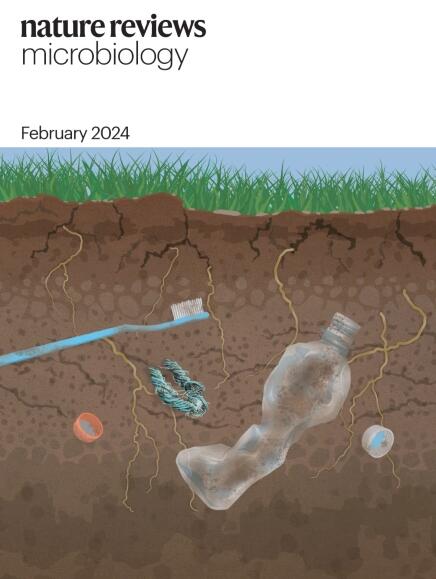Commensalism and pathogenesis of Candida albicans at the mucosal interface
IF 103.3
1区 生物学
Q1 MICROBIOLOGY
引用次数: 0
Abstract
Fungi are important and often underestimated human pathogens. Infections with fungi mostly originate from the environment, from soil or airborne spores. By contrast, Candida albicans, one of the most common and clinically important fungal pathogens, permanently exists in the vast majority of healthy individuals as a member of the human mucosal microbiota. Only under certain circumstances will these commensals cause infections. However, although the pathogenic behaviour and disease manifestation of C. albicans have been at the centre of research for many years, its asymptomatic colonization of mucosal surfaces remains surprisingly understudied. In this Review, we discuss the interplay of the fungus, the host and the microbiome on the dualism of commensal and pathogenic life of C. albicans, and how commensal growth is controlled and permitted. We explore hypotheses that could explain how the mucosal environment shapes C. albicans adaptations to its commensal lifestyle, while still maintaining or even increasing its pathogenic potential. In this Review, Hube and colleagues overview the commensal and pathogenic lifestyles of Candida albicans, focusing on how the fungus transitions between these two states, the fungal and host factors involved, and the role of the mucosal microbiota on C. albicans commensalism.


粘膜界面白色念珠菌的共生和致病机制
真菌是重要的,但往往被低估的人类病原体。真菌的感染主要来自环境,土壤或空气中的孢子。相比之下,白色念珠菌作为最常见和临床上重要的真菌病原体之一,作为人类粘膜微生物群的一员,永久存在于绝大多数健康个体中。只有在某些情况下,这些共生菌才会引起感染。然而,尽管白色念珠菌的致病行为和疾病表现多年来一直是研究的中心,但其在粘膜表面的无症状定植仍然令人惊讶地缺乏研究。本文综述了真菌、寄主和微生物对白色念珠菌共生和致病二元论生活的影响,以及如何控制和允许共生生长。我们探索可以解释粘膜环境如何塑造白色念珠菌对其共生生活方式的适应,同时仍然保持甚至增加其致病潜力的假设。
本文章由计算机程序翻译,如有差异,请以英文原文为准。
求助全文
约1分钟内获得全文
求助全文
来源期刊

Nature Reviews Microbiology
生物-微生物学
CiteScore
74.00
自引率
0.50%
发文量
149
审稿时长
6-12 weeks
期刊介绍:
At Nature Reviews Microbiology, our goal is to become the leading source of reviews and commentaries for the scientific community we cater to. We are dedicated to publishing articles that are not only authoritative but also easily accessible, supplementing them with clear and concise figures, tables, and other visual aids. Our objective is to offer an unparalleled service to authors, referees, and readers, and we continuously strive to maximize the usefulness and impact of each article we publish. With a focus on Reviews, Perspectives, and Comments spanning the entire field of microbiology, our wide scope ensures that the work we feature reaches the widest possible audience.
 求助内容:
求助内容: 应助结果提醒方式:
应助结果提醒方式:


